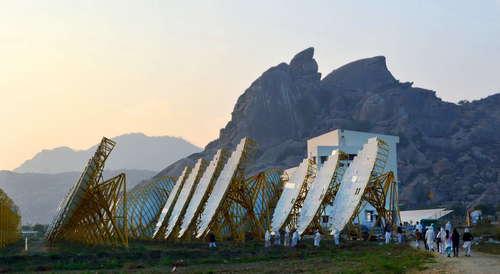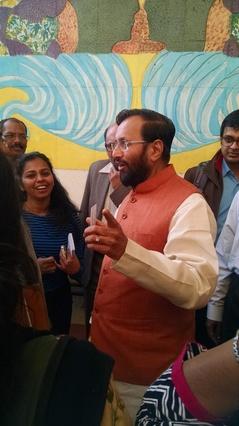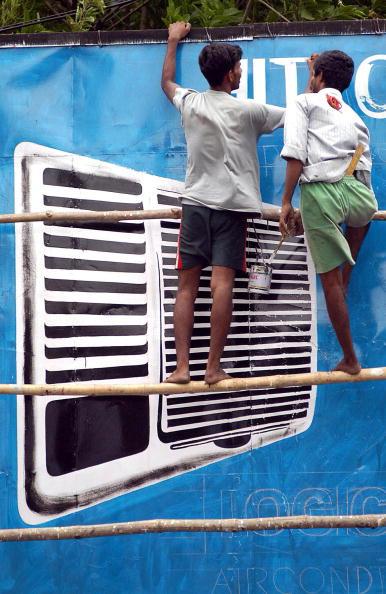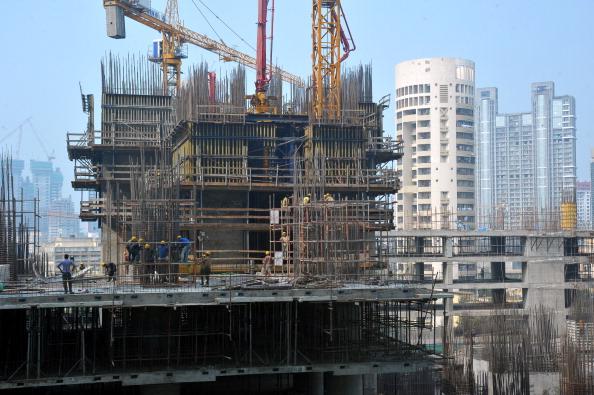As India celebrates Independence Day this Friday, August 15th, it will bring with it a history of struggle, conflict, and triumph. It is certain that India has come a long way in the 67 years since it gained independence, and Indian Prime Minister Narendra Modi has made promises since he took office in May to improve the livelihoods of the Indian people. But in a country where many live below the poverty line and where over 300 million people still lack access to a reliable electricity source, improving the overall quality of life while building a strong economy and protecting the country from the impacts of climate change is no easy task. Fortunately, solar power is shedding some light towards improving the difficult lives of rural communities by increasing clean energy access, and on this independence day, even those at the lower levels of poverty—the saltpan (salt flat) workers of the scorching hot Surendranagar District of Gujarat—can look toward an improved future.
The sun was already beating down on the on the Little Rann of Kutch desert in Western India during our visit earlier this year to the remote community with the Self Employed Women’s Association (SEWA). The desert is inhabited by 10,000 salt farmers, or agarias, and their families, who work in the scorching heat for 8 months out of the year to pump out brine from the ground and dry it in the sun to meet a large percentage of the country’s salt demand. We got the opportunity to visit and talk with the SEWA saltpan farmers in the desert to witness the strenuous process first-hand.
For years, without access to the energy grid, the agarias have been using diesel-powered generator pumps to draw brine from the ground, and as the prices of diesel have risen, the farmers have been spending every penny they earn or save to run the pumps. What the farmers told us is that each saltpan requires about 200 liters of diesel for a traditional diesel pump, an expenditure of approximately INR 10,000 ($170). This is where solar energy, a resource available in abundance in the Indian deserts, is giving this community a new lease on life. Thanks to the pilot undertaken by SEWA, energy from a solar panel mounted near the pumps provides clean energy to power the pumps, giving the saltpan farmers an opportunity to save energy and costs for the first time in a long time.
Registered in 1972, SEWA is a trade union organization of poor, self-employed women workers in India who earn a living through their own labor or small businesses, and who do not obtain regular salaried employment with welfare benefits like workers in the organized sector. SEWA has been working for several decades to improve the working and living conditions of many women in India’s unorganized labor force, including those of women saltpan farmers.
On our visit we learned that the SEWA saltpan members started replacing energy guzzling diesel pumps with diesel generators, allowing the amount of diesel previously consumed by one pump to be used to power 3 to 4 electric pumps. The members told us that the increase in efficiency of this system translated into over a 50 percent reduction in fuel expenses but even more can be done to explore efficiency improvements to the pump units and system.
The SEWA saltpan members have since built on this success by introducing solar powered pumps to the agaria community, reducing the need for expensive diesel during much of the day. Over time, SEWA has worked hard to integrate solar pumps into the livelihoods of the community, overcoming initial challenges posed by the pumps’ upfront costs and the workers’ unfamiliarity with the mechanisms. SEWA trained villagers in the solar powered pumps’ operation and maintenance, and provided credit for their purchase. SEWA has itself strived to continually improve the technology provided, bringing in more efficient pumps that come with warranties. Through this first-of-its-kind initiative, SEWA has already installed 25 DC power solar systems and 10 AC power solar systems in Surendranagar.
The opportunity to scale this initiative in Gujarat is significant. The state receives ample sunshine—even by significantly high Indian standards. As technologies continue to improve and prices fall, there is hope that every liter of diesel used for a pump or generator in the state’s saltpan industry can soon be replaced with a renewable source of energy. Institutions that provide micro-financing options to laborers like the saltpan workers, such as the SEWA Bank, as well as programs like India’s National Solar Mission, which accepts project proposals for small, off-grid solar photovoltaic systems, serve as a promising means of funding such endeavors.
SEWA is definitely on the right track when it comes to improving the lives of the saltpan workers, but much more can be done. Increasing access to credit and solar power subsidies through better financing options and better dissemination of information about available programs is critical to expanding clean energy access in remote communities. Improvements to the system can also come from increased energy efficiency in salt mining pumps as well as additional solar panels. By demonstrating the potential of clean energy, and by overcoming the some of the financing and policy challenges that are keeping energy efficiency and solar energy out of the saltpans, India’s rural communities have taken one step closer to a future marked by clean, renewable energy as a means of sustaining and improving their livelihoods.
Co-authored by Nehmat Kaur and Mia Diawara



